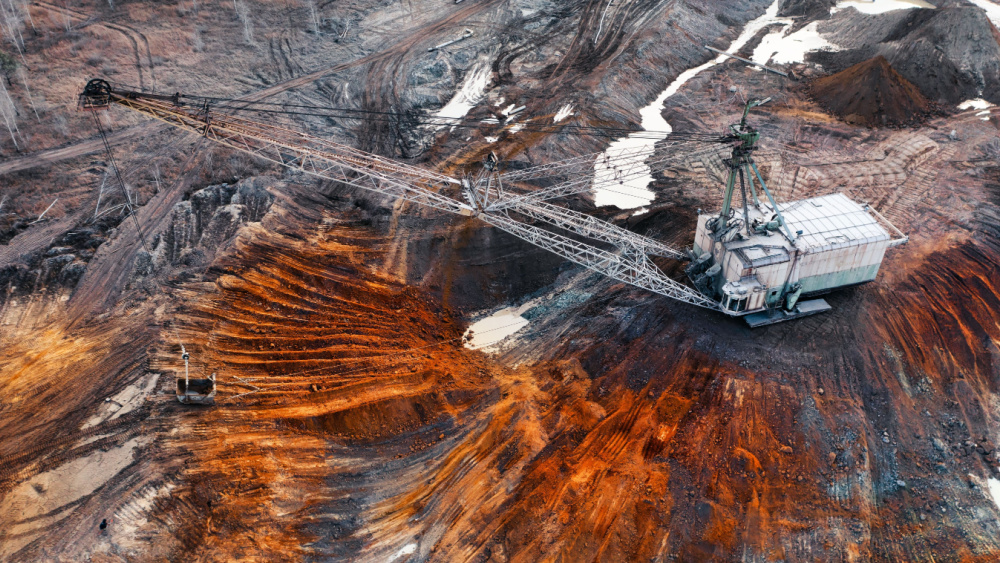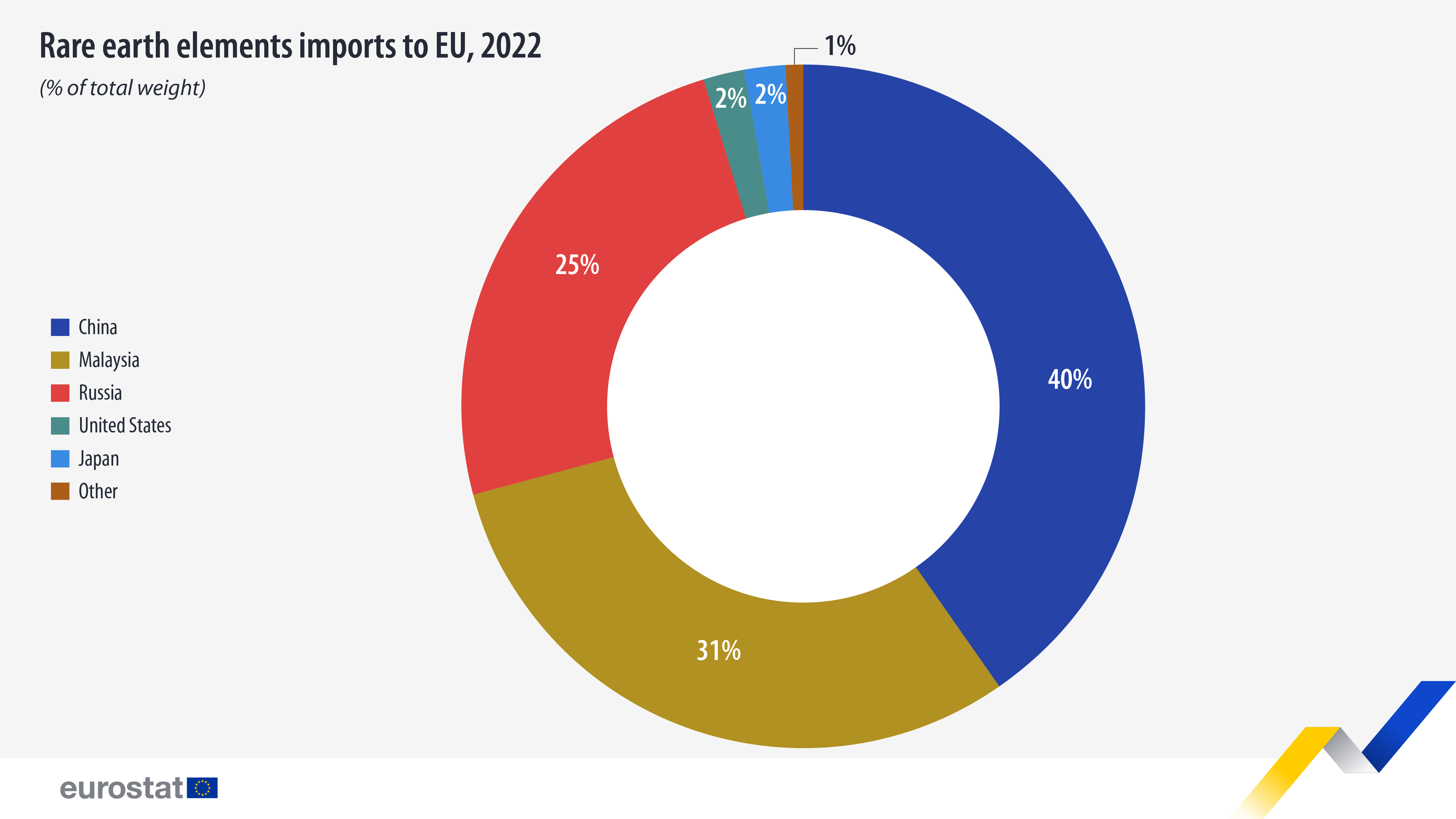Trade in rare earth elements increases in 2022

In 2022, the EU witnessed a significant increase in the import of rare earth elements (REE+). A total of 18 thousand tonnes were imported, a 9% increase from 2021, and 7 thousand tonnes exported, a decrease of 8% compared with the previous year. The value of imports surged to €146 million, marking a 37% rise compared with 2021, while exports reached €142 million, representing a 2% increase over the previous year.
Rare earth elements are a group of 17 specialty metals with a high supply risk and significant economic importance, used in various high-tech applications.
Source dataset: Eurostat extraction
The average price for imports was €7.9 per kilogram, marking a 26% increase compared with 2021, while the price of the exports was €20.7 for each kilogram of rare earth elements, an increase of 11%.
China: the largest partner for imports of rare earth elements
China was the largest partner for imports of rare earth elements, accounting for 40% of the total weight of imports, or 7.4 thousand tonnes. It was followed by Malaysia, contributing 31% of imports, or 5.6 thousand tonnes, and Russia, with 25% of the imports, or 4.5 thousand tonnes. The United States and Japan each held a 2% share in EU imports of rare earth elements.
Source dataset: Eurostat extraction
This article marks the beginning of the Raw Materials Week, an annual event organised by the European Commission that gathers key stakeholders in the field and provides an overview of ongoing EU activities in this sector.
For more information
- International trade in critical raw materials
- Publications on international trade in goods
- Thematic section on international trade in goods
- Database on international trade in goods
Methodological notes
- REE+ are a set of seventeen chemical elements in the periodic table, specifically the fifteen lanthanides plus scandium and yttrium. They are used in everyday technologies like cellphones and computers but also in advanced medical technologies like MRIs, laser scalpels and even some cancer drugs. In defense applications, they are used in satellite communications, guidance systems and aircraft structures. They are critical in a number of green technologies, especially those that support net zero carbon emissions goals, like wind turbines and electric vehicles. Rare earth elements defined by the Combined nomenclature (CN) classification are the following:
- 28053010 Intermixtures or interalloys of rare-earth metals, scandium and yttrium
- 28053020 Cerium, lanthanum, praseodymium, neodymium and samarium, of a purity by weight of >=95% (excl. intermixtures and interalloys)
- 28053030 Europium, gadolinium, terbium, dysprosium, holmium, erbium, thulium, ytterbium, lutetium and yttrium, of a purity by weight of >=95% (excl. intermixtures and interalloys)
- 28053040 Scandium, of a purity by weight of >=95% (excl. intermixtures and interalloys)
- 28053080 Rare-earth metals, scandium and yttrium, of a purity by weight of <95% (excl. intermixtures and interalloys)
- 28461000 Cerium compounds
- 28469010 Compounds of lanthanum, praseodymium, neodymium or samarium, inorganic or organic
- 28469020 Compounds of europium, gadolinium, terbium, dysprosium, holmium, erbium, thulium, ytterbium, lutetium or yttrium, inorganic or organic
- 28469030 Scandium compounds, inorganic or organic
- 28469090 Compounds of mixtures of rare-earth metals, yttrium and scandium, inorganic or organic
If you have any queries, please visit our contact us page.


